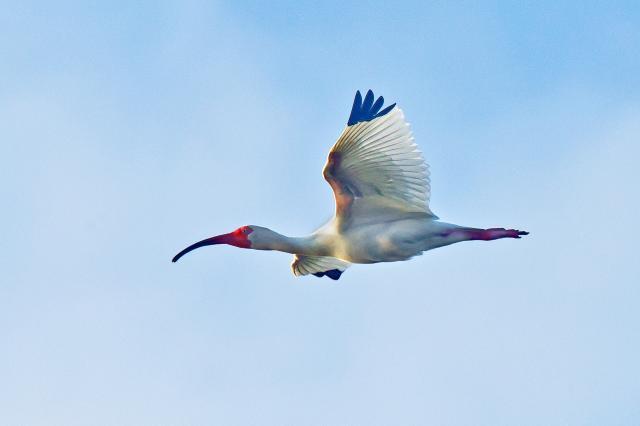For more than 25 years, Audubon North Carolina has managed a network of coastal sites along our state’s coastal plain offering a haven for nesting waterbirds. With specialized habitats and protection from predators and human disturbance, coastal birds in our state have a chance to thrive. Read on to learn more about the birds the Coastal Sanctuary Program protects.
During the two decades and across the 20 islands and beaches that make up the Sanctuary system, Audubon’s conservation efforts have led to real change for the species that frequent our coastline.
The North Carolina Wildlife Resources Commission and Audubon North Carolina monitor and protect Brown Pelican nesting sites. About half of the state's Brown Pelicans nest on Audubon's islands where they are safe and have excellent nesting habitat.
Pelicans were first recorded breeding in North Carolina on Royal Shoal, one of the state's first Audubon sanctuaries, in 1929. From those 14 pairs, the population grew to more than 100 pairs nesting around Ocracoke Inlet on islands that Audubon still protects today.
Beginning in the 1980s and continuing through the 1990s, Brown Pelican began to expand their range northward, and their numbers in North Carolina continued to grow. This was possible because there was a network of protected islands available for nesting.
Today 4,000-5,000 pairs nest in North Carolina. The Sanctuary Program is special to these pelicans because they have exactly what they need to thrive.
White Ibis are abundant in North Carolina, making them a responsibility species for conservation protection. To ensure their population remains healthy, it’s vital to maintain safe, high-quality nesting sites.
White Ibis were first recorded breeding on North Carolina waterways in 1889, but they were not found nesting in large numbers until 1950. Then, in the early 1960s, they began to appear on Battery Island. Numbers grew, and now as many as 14,000 pairs nest on the island in a single season, making the Audubon North Carolina managed Battery Island globally significant to maintaining their population.

Model of Conservation Partnerships
North Carolina is a great model in the way partnerships and collaboration can work to benefit birds. Through planning, land management, habitat restoration, scientific research, banding and census initiatives, not only are the birds protected, but environmental conservation programs are enhanced through these statewide partnerships.
Partners across the state currently working to protect and maintain the sanctuaries include the Cape Fear Garden Club, NC Coastal Federation, NC Coastal Land Trust, NC State Parks, NC State University, NC Wildlife Resources Commission, State Natural Heritage Program, Town of Wrightsville Beach, US Army Corps of Engineers, UNC Wilmington, Wrightsville Beach Elementary School, and more.
Importance of the Sanctuaries
Protecting these sanctuaries from predators and people during nesting season is incredibly important for the health of our birds.
Without these special places, birds like the Brown Pelican, White Ibis and many other coastal birds would have very few suitable nesting sites in the state. For example, there is nowhere within 100 miles of the Cape Fear River that have the right habitat for nesting Brown Pelicans.
Birds are sometimes taken for granted, and many think that they will always be here. Unfortunately this isn’t the case. Audubon’s Sanctuaries are essential to our coastal birds; they need active protection and active management in order to maintain healthy populations of waterbirds.
To learn more about how you can help protect coastal birds or get involved with the Sanctuary Program contact Audubon North Carolina’s coastal biologist Lindsay Addison.



